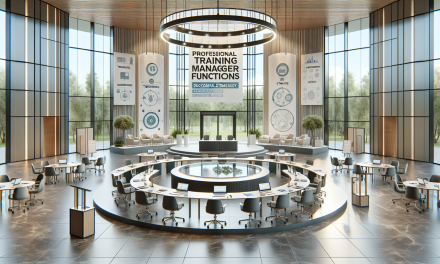Table of Contents
- Introduction
- Understanding Leadership Styles
- Dynamics of Decision-Making
- Workshop Overview
- Interactive Exercises and Activities
- Benefits of Participation
- FAQs
- Conclusion
Introduction
In today’s rapidly changing business environment, effective leaders are those who can inspire their teams, navigate challenges, and make informed decisions swiftly. To achieve this, understanding various leadership styles and mastering decision-making dynamics are crucial. The Dynamic Leadership & Decision-Making Styles Workshop provides the essential skills and insights to elevate your leadership game.
Understanding Leadership Styles
Leadership is not a one-size-fits-all concept. Different situations and team dynamics call for varied leadership approaches. For instance, an effective leader might adopt a transformational style to inspire and motivate, while a transactional approach may be best suited for ensuring that tasks are completed efficiently. Thus, recognizing and adapting your style can lead to enhanced performance across your team.
The Transformational Leader
Transformational leaders focus on inspiring their teams to innovate and excel. They create a shared vision, fostering an environment where each member feels valued and motivated to contribute to common goals.
The Transactional Leader
On the other hand, transactional leaders prioritize structure and clear objectives. They emphasize rewards and penalties based on performance, which can drive consistency and accountability within teams.
Situational Leadership
Furthermore, situational leadership acknowledges that different circumstances require different approaches. A leader must assess their team’s needs and adjust their style accordingly. This flexibility can significantly enhance team dynamics and contribute to success.
Dynamics of Decision-Making
Decisions form the backbone of effective leadership. A leader not only defines the path but also influences the momentum. Understanding the dynamics of decision-making can propel a team from confusion to clarity.
The Art of Decision-Making
Effective decision-making involves recognizing options, assessing risks, and weighing the potential impact on the team and organization. By modeling sound decisions, leaders can guide their teams towards beneficial outcomes.
How Team Dynamics Influence Decisions
Moreover, team dynamics play a critical role in decision-making. Collaborative environments promote creativity and diverse perspectives, enriching the decision-making process. Thus, fostering open communication among team members can yield innovative solutions.
Workshop Overview
Transitioning into the Dynamic Leadership & Decision-Making Styles Workshop, participants can expect to gain invaluable insights and practical skills. This engaging workshop, designed for professionals at all levels, effectively blends theory with real-world application.
Interactive Learning Environment
The workshop emphasizes interaction and hands-on experiences. Through role-playing scenarios and group discussions, attendees will engage deeply with various leadership and decision-making styles, testing their application in realistic situations.
Real-World Applications
Considering real-world applications, participants will share experiences and strategies, leading to deeper learning. Additionally, sharing individual challenges fosters a collaborative approach to solving common issues.
Interactive Exercises and Activities
Dynamic exercises form a core component of the workshop, allowing participants to experience the theories in practice. These activities promote teamwork, encourage critical thinking, and enhance communication skills.
Group Decision-Making Challenges
For instance, group decision-making challenges encourage collaboration. Participants will develop skills to analyze situations collectively, ensuring diverse inputs are valued, ultimately leading to better decisions.
Leadership Style Assessments
Similarly, conducting leadership style assessments provides participants with an understanding of their tendencies and how they can adapt to various situations. Recognizing one’s strengths and weaknesses facilitates personal development and growth as a leader.
Benefits of Participation
Ultimately, engaging in the Dynamic Leadership & Decision-Making Styles Workshop reaps numerous benefits that extend beyond individual learning.
Enhanced Leadership Skills
Firstly, participants will develop enhanced leadership skills, empowering them to lead teams more effectively. Equipped with practical tools and techniques, leaders can respond adeptly to team needs and challenges.
Increased Team Cohesion
Next, fostering increased team cohesion remains a key outcome. By understanding each other’s leadership styles and decision-making preferences, teams can collaborate more efficiently, reducing conflicts and miscommunication.
Boosted Confidence and Morale
In addition to skill development, boosting confidence and morale among teams plays a significant role. When leaders feel assured in their capabilities, they can cultivate an environment where team members are motivated to contribute actively.
FAQs
What can I expect to learn from the workshop?
Participants can expect to learn various leadership styles, decision-making techniques, and practical methods to apply these concepts in real-life scenarios. Moreover, networking opportunities will allow attendees to share experiences and insights.
Who should attend this workshop?
This workshop is designed for professionals at all levels, including team leaders, managers, and executives seeking to enhance their leadership and decision-making skills.
Is there a pre-requisite for attending?
No formal pre-requisites exist. The workshop welcomes anyone interested in improving their leadership capabilities and learning effective decision-making techniques.
Conclusion
In conclusion, mastering leadership and decision-making is essential in today’s complex business landscape. By participating in the Dynamic Leadership & Decision-Making Styles Workshop, individuals will emerge with a solid understanding of effective leadership styles, enhanced decision-making abilities, and the confidence to lead with purpose. This investment in personal and professional growth ultimately leads to a thriving workplace, fostering success across all levels.





